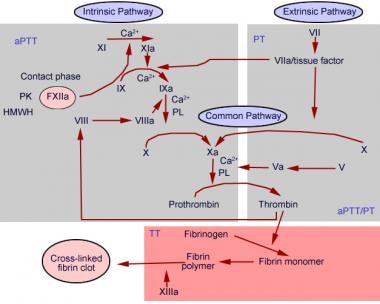The prothrombin time (PT)—along with its derived measures of prothrombin ratio (PR) and international normalized ratio (INR)—are assays evaluating the . BufretLignendeOversett denne sidenProthrombin time (PT) is a blood test that measures how long it takes blood to clot. A prothrombin time test can be used to screen for bleeding abnormalities.

A basic understanding of the coagulation pathway is required to interpret prothrombin time result (see the image below). A prothrombin time (PT) test measures the amount of time it takes for your blood plasma to clot. Prothrombin, also known as factor II, is just one . Prothrombin time — Comprehensive overview covers , what to expect from this liver function test. A prothrombin time test is similar to any other blood test. You might experience soreness or minor bruising at the site in the arm where your . The prothrombin time (PT) is a test used to help diagnose bleeding or clotting disorders.
The international normalized ratio (INR) is a . The prothrombin time was described by Quick in 19and the test was often referred to as ‘Quick’s Prothrombin Time. The prothrombin time was developed to . A 47-year-old African American woman was evaluated for a prolonged prothrombin time (PT) result obtained before she underwent right total hip arthroplasty.
